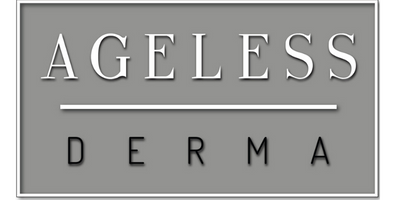Face Cream For Forehead Wrinkles
Hyaluronate in face cream preparations for smoothening forehead wrinkles
Hyaluronate, also known as hyaluronic acid (HA) or hyaluronan is a component that contributes to the proliferation of cell and its migration. It is widely distributed throughout the body’s neural, epithelial and connective tissues. Hyaluronate sometimes listed as sodium hyaluronate in face cream preparations is found in many body tissues like the skin and cartilage. It is essential for lubrication of the joints of the body and gives resilience to the cartilage.
Hyaluronate is the skin’s natural moisturizer and is largely involved in the repair of tissues and the synthesis of collagen. The body’s production of hyaluronic acid decreases as the individual ages, contributing to loss of moisture, so the old skin becomes less supple and thinner and oftentimes forms forehead wrinkles.
Hyaluronic acid is available as injectibles under the brand names Restylane and Juvederm for smoothening forehead wrinkles. The injection temporarily adds volume under the skin for around six months. Injection are useful for many other skin care and beautification processes like lip augmentation, skin fold reduction and scar removal, aside from being wrinkle fillers. Injections, however have been known to cause some pain for many individuals, and may result in some bruising and swelling that lasts for a few days. There have also been some reports of people developing arthritis attributed to anti-wrinkle injections.
Hyaluronate or hyaluronic acid is widely used in skin care products including face cream for topical applications. It has the ability to hold water making it an excellent ingredient to moisturizers. Its humectant action draws water into the skin, hydrating it. Hyaluronic acid also helps in increasing retinoic acid’s presence which helps increase the synthesis of collagen. However, the exposure of hyaluronic acid to UV rays degrades the substance, so topical application is problematic if the individual is always exposed to the sun.
People suffering from dry skin will benefit from moisturizers containing hyaluronate. Other clinically effective anti-aging treatments include the injections of hyaluronic acid, laser resurfacing and topical retinol application. Experiments have shown that the skin cells known as fibroblasts create collagen by secreting complex proteins and polysaccharides. This process gives shape and elasticity to the skin as well as supports the skin’s blood vessels diminishing the appearance of forehead wrinkles considerably.Sodium hyaluronate is the salt of hyaluronic acid which is responsible for stimulating the production of collagen. Hyaluronic acid is currently produced from benign bacteria to be identical to those found within the tissues of the body, in the face and the skin. Originally, the substance used as face cream ingredient had been derived from the combs of roosters. Because of its water-attracting properties and water-binding attributes, the spaces between elastin and collagen are filled up. HA helps in hydrating and separating the skin when injected into the face, supporting the components making the face smoother and plumper.
The dermis layer of the skin is composed of almost 70% water and 50% of the total HA allocation goes to work to hydrate the skin and support its functions. When there is enough hyaluronic acid from dietary sources, the skin becomes attractive and looks healthy. As a person advances in age, the HA produced by the body decreases, dehydrating the skin resulting in roughness, forehead wrinkles, fine lines and flaking.
Aging also results in flappy, wrinkled skin which is the result of loss or reduced production of skin nourishment including elastin, collagen and hyaluronic acid. Elastin needs water which is provided by the hydrating properties of hyaluronic acid in face cream form. HA also functions to transport the necessary framework to hold up the skin’s structure. Without hydration and support, the skin becomes dry making it brittle, dull looking with loose, flappy skin. Aged skin is visibly dry and sagging, with forehead wrinkles, crow’s feet and frown lines.
The normal metabolism of the body is aided by the use of hyaluronate, resulting in softer, smoother, hydrated skin. Topical applications of hyaluronate in face cream preparations include its virtual sponge effect in the face, drawing in water and preventing it from escaping. The face gets a fuller appearance, becomes glowing and supple with decreased wrinkles with the help of sodium hyaluronate.
The molecular size of sodium hyaluronate is smaller than hyaluronic acid, so it easily penetrates the skin. It is also able to hold up to 1,000 times its weight in water. The salt of HA when used as a face cream ingredient reaches deep down the skin when applied topically and combines with water, attracting and maintaining continuous hydration. Ageless Derma with hyaluronate promote the microcirculation between the skin and blood and helps in the absorption of nutrients.
